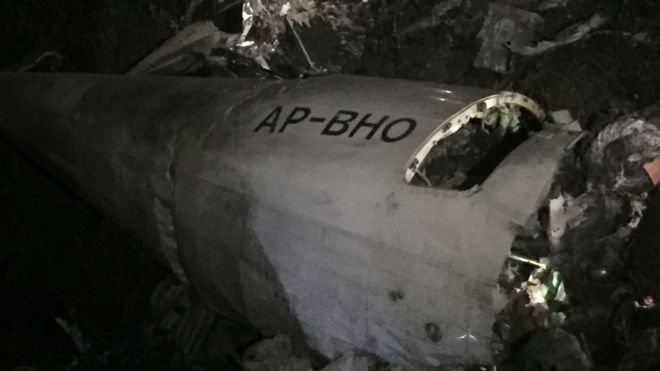The Aircraft Accident Investigation Board (AAIB) of Pakistan has completed the investigation of Pakistan International Airline flight PK-661 (aircraft AP-BHO) that was carrying 47 passengers and crew members who all lost their lives near Havalian, while it was on its way from Chitral to Benazir Bhutto International Airport, Islamabad.
- Indigo flight from Jeddah diverted to Karachi after a medical emergency, a passenger was found dead upon checkup
- Caretaker Government of Pakistan plans to “gradually shut down” Pakistan International Airlines
- Zara Airways: The story of an airline on paper that dreams of starting flights from Canada to Pakistan
- Ethiopian Airlines resumes flights to Karachi after 19 years
- Kam Air advertising flights between Mazar e Sharif and Islamabad
The Investigation Report states that the air crash was “the result of three (03) latent technical factors including
1: Fracture of one of the power turbine blades of Engine No. 1
2: A broken/ fractured pin inside Overspeed governor
3: Probable pre-existing contamination inside the Propeller Valve Module (PVM).
According to Pakistan Civil Aviation Authority the air crash investigation spanned over nearly 4 years due to the complexity and unprecedented nature of latent conditions. The detailed investigation required keeping all stakeholders on board through rigorous coordination with the respective states and their aircraft accident investigation bodies. This report is being released with the concurrence of these stakeholders i.e BEA of France, TSB of Canada and NTSB of USA.
The report further claims that the aircraft crash investigations are carried out under the guidelines provided by ICAO and are aimed at improving the safety of air travel and to avoid any recurrence in future.
Pakistan International airlines spokesperson said in a statement that the airline “has reviewed the entire crash report and acknowledges that there were three latent factors that aligned together at the time of the crash. Had any of these factors happened in isolation, the consequences would not have been so devastating”.
The airline further said that “during the course of the investigations, PIACL remained at the disposal of AAIB for implementing the most immediate safety recommendations which were given earlier. PIACL on its own part has already incorporated immediate safety recommendations including PT blade modifications & inspections of Over Speed Governors at the manufacturing facility. It is worth mentioning here that there have been no similar events recorded in the industry or with the same equipment which could help PIACL maintenance and training to simulate such a scenario”.
PIA also mentioned that “right in the aftermath of the PK 661 incident, CAA and PIA grounded all the ATR fleet to conduct a shakedown test of each aircraft and teams from ATR and Pratt & Whitney (OEMs) came and stayed with PIA for many months to inspect and audit PIA’s maintenance regimen and did not point out any significant safety-related observations and recommendations, and only suggestions to further improve the maintenance processes”.

